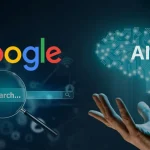
Biometric authentication and facial recognition technology is one of the most popular means to authenticate or identify people, especially since faces cannot be stolen or falsified like fingerprints and voices can.
Face recognition engines use artificial intelligence and machine learning techniques to compare an incoming image against existing data stored in their databases, offering secure and scalable results.
Identity Verification
Facial recognition technology works similarly to fingerprint identification in that it verifies identity using facial biometrics. However, unlike fingerprint scanning which often fails when fingers become dirty or wet, facial verification offers reliable security solutions in nearly all circumstances.
Modern facial recognition systems like Daon’s xFace do not store images; rather they use mathematical vectors that cannot be converted back to images. When users retake photos or videos, the system compares the new vector against its registration vector to verify whether or not it belongs to the same individual.
Facial recognition technology can assist universities and schools with attendance tracking as well as law enforcement in finding missing persons by matching faces against criminal databases. Some may worry about its potential to breach privacy; fortunately, ongoing advances in artificial intelligence are providing solutions for this concern with transparent algorithms focusing on accuracy and fairness updates; this enables face recognition to be used responsibly for use cases such as:
Access Control
Facial recognition technology enables access control by verifying an individual’s identity. It is particularly helpful in airports to match travelers to their passport photos, hotels or residential complexes for building entry security purposes and online banking where customers can use facial authorization instead of typing passwords or PIN numbers for transactions.
Biometric systems may be intrusive to privacy in certain contexts, depending on their design and technology used. Therefore, organisations should consult end users prior to implementation of any biometric system and include avenues of redress should misuse or fault occur. Cultural and religious influences may limit an individual’s participation; organizations should take this into account before embarking on implementation projects and hold proper consultation meetings in order to identify any limitations early and build systems around them.
Fraud Prevention
NEC’s biometric face recognition technology aims to combat crime, prevent fraud and increase public safety across a diverse array of locations and industries. Drawing upon decades of biometric technology experience, its fast real-time identification, verification, analysis and situation assessment features provide security as well as risk protection measures, for more streamlined services.
Facial recognition technology can provide a secure login to online banking accounts, preventing unwarranted access and verifying users as the people they claim to be. Furthermore, airports have begun adopting facial recognition in order to save travel time while increasing security by verifying travellers against passport photos.
Face recognition systems can assist with AML compliance requirements by verifying that people comply with anti-money laundering laws when opening new bank accounts or using ATMs. They’re particularly useful during onboarding when criminals may try to use stolen customer information or identity. Unlike fingerprint and voice recognition, facial recognition does not store images but transforms them into mathematical vectors based on distance between characteristic points on someone’s face, then compare these vectors against registration vectors to authenticate identity.
Public Safety
Public Safety utilizes biometric recognition technologies to quickly and reliably identify people, whether from a distance or when their faces are obscured by masks, headgear, glasses or facial hair. These identification techniques tend to be more reliable than gait or voice recognition which could be limited by noise and other environmental factors.
Facial recognition systems and facial databases have raised serious ethical questions, particularly in public safety contexts where their misuse could create power imbalances between governments and citizens. Therefore, it is vitally important that government is clear which security contexts these systems can be applied and who will oversee them to protect individual’s privacy as much as possible; while live tracking facial recognition should also be strictly limited so as to avoid an atmosphere of permanent surveillance.







